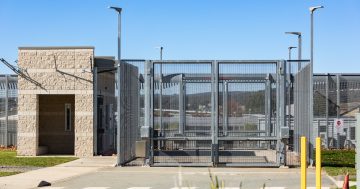
Once again our local jail, the Alexander Maconochie Centre (AMC), is almost full. This is not the first time. It was only 2014 when AMC was overflowing and resulted in some detainees having to be housed in an alternative facility while a $50 million extension to the jail was undertaken to increase the capacity to over 500 male and female detainees.
Despite this recent significant expansion we once again are facing a situation where the AMC is almost at capacity. In many ways, this is not all that surprising. When the building of a local jail was originally proposed, there were many advocates who feared that we would follow the global trends of demand spiking once these types of facilities are built. Generally with jails, the principle of ‘if you build them, they will come’ prevails, and this is exactly what has occurred in the ACT. At the time of building this facility, there were particular concerns regarding the impact on women, when the decision was made to co-locate women in the same facility, given the strong evidence that community-based solutions were the best way to respond to women interacting with the justice system.
The filling of the jail has occurred at a time where we are seeing falling crime rates in the Territory. We hear that some of it is being driven because of increased family and domestic violence offences but this doesn’t explain the large increase in numbers.
When we look at some of the demographics of our prison population, there are real concerns. The characteristics of our detainees are worryingly similar to many jail populations across Australia. Far too many of them are Indigenous, around 21% of the jail population, whereas in the general population they represent less than two per cent of the population. A large proportion of them suffer from mental health conditions – around 80% of Australian prisoners report mental health issues (compared with 31% of the general population). Many of them are struggling with alcohol and other substance abuse issues, and a majority, particularly in the female detainee cohort, have been victims of crime themselves – in the form of sexual abuse and family and domestic violence at some point in their lives.
Rethinking how we are approaching this issue is not about being ‘soft on crime’ but deciding where we want to put our investment – particularly when we know it costs us around $160,000 a year to house just one detainee in AMC, and any further expansion is going to cost many million dollars in capital costs.
There is strong evidence that a justice re-investment approach provides a framework for us working to keep people out of jail and support those who are there not to return. There have been some very positive programs introduced in recent years that are trying to do just this and that seem to demonstrate that this is something we need to invest in further.
Examples include the ‘Extended throughcare program’ which aims to provide intensive support for detainees once they leave prison. The program has been evaluated and is delivering good results, with a drop of around 23% recidivism – a significant drop. The High-Density Housing Project has also been running for a number of years and has seen violent crime reduced by 50%, property crime by 60% and disturbance incidents by 49%. As well, it has been demonstrated to save police time around $0.50 for every $1 invested. We have also seen the Detention Exit Community Outreach program (DECO), operating over the last three years to provide transitional support for individuals with a diagnosed mental illness who are exiting detention and transitioning back into the community, is delivering strong results. Over the three years of the program, of the 81 people who participated in DECO as of June 2017, only six people, or seven per cent, have re-offended. Specific programs focusing on the Aboriginal detainee population, such as the Yarrabi Barirr Program are also yielding promising results.
While these programs have been delivering some good results, there is clearly much more that needs to be done to stop the ever-increasing demand within our jails. We know it can be done – amazingly in the ‘tough on crime’ American state of Texas, governments are decommissioning jails because their diversion and rehabilitation programs have been so successful. The Netherlands has had a declining prison population for a decade which has forced them to import prisoners to ensure that their prison system remains viable. Factors that have been attributed to Netherlands low crime rate (only around 10,000 people in a population of 17 million) include relaxed drugs laws, a focus on rehabilitation and an electronic monitoring system that allows people to be in the workforce. The last initiative is believed to reduce the rate of recidivism rate by up to half, compared to sending people to jail.
I think it is time to get serious in implementing more justice reinvestment programs to head off the need for further money being sunk into our criminal justice system. What do you think?
















